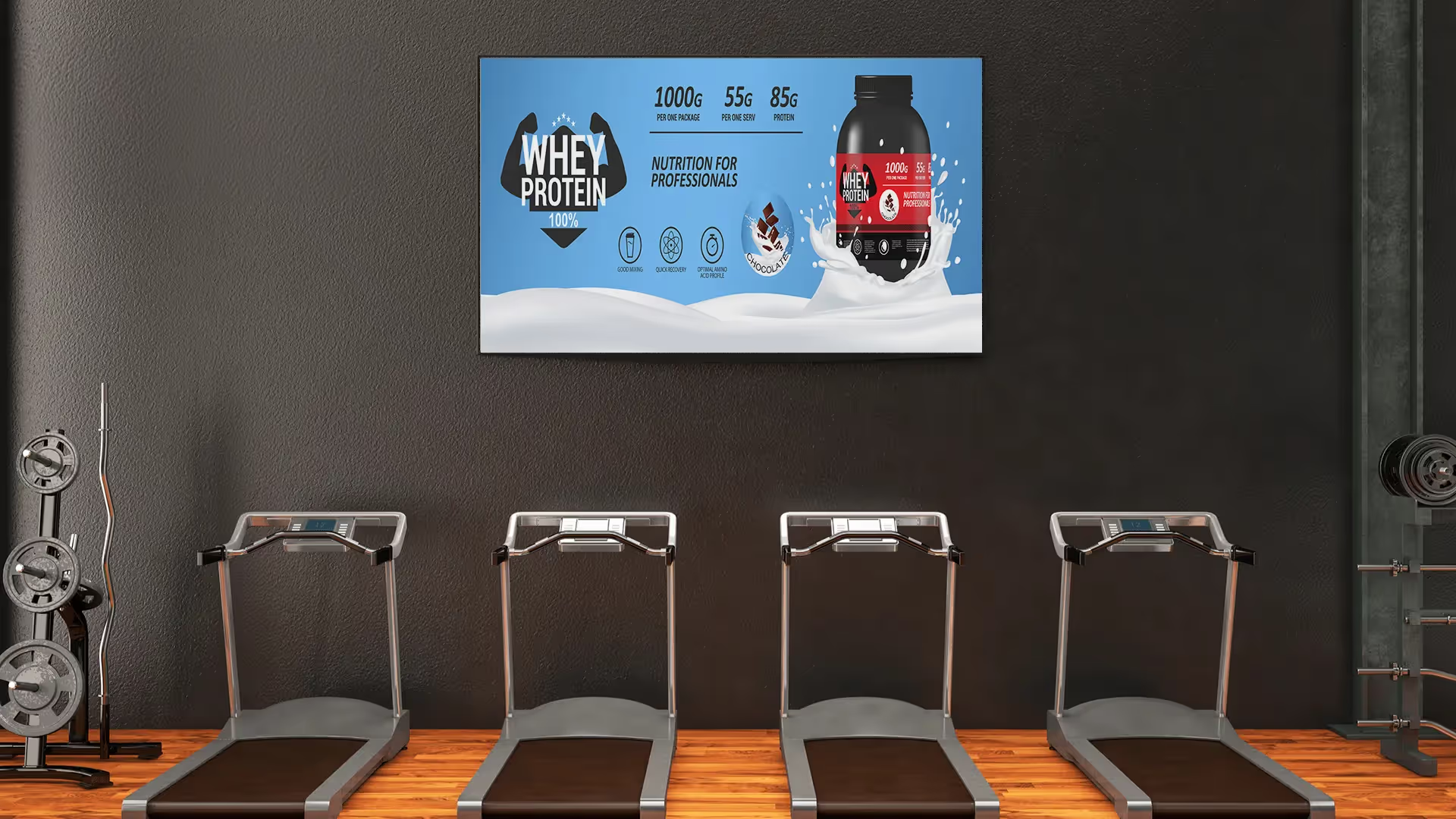What to remember
Making a point of sale more attractive and efficient is the priority of marketing and sales managers of major brands. To achieve this, digital signage is a frequently used tool. Therefore, operational questions arise:
How to install screens at the point of sale? Where to deploy them? How can you be sure they will be seen?
To choose the right location for your screens and make your store a successful point of sale, let's see together best practices and proven examples from major brands.
✌️ The two strategic areas for deploying screens
Many content strategies coexist within the same set of screens, but there are two main trends, depending on the areas where the screens are installed. In a point of sale, there are two major areas in which to install digital signage: waiting points and transit areas.
Waiting points ⏱️
Nobody likes to wait, but in the retail world, it's a mandatory step. Whether at the checkout or while waiting for a salesperson to free up to answer customer questions, Excessive or poorly managed expectations create a disappointing experience.
👉Adding screens at these times reduces the feeling of waiting. Because the mind is busy, the perception of waiting time is reduced.
.avif)
👀 Example of a successful strategy ⬇️
The sign Boulanger installed screens near the cash registers in order to limit the perceived waiting time. Customers can thus watch national content (new offer, product release, communication from a major brand, etc.) or local content that each store can take control of.
-1.avif)
With monetization, retailers can broadcast sponsored messages from major brands that use screens to remind them of their message directly at the point of sale. Enough to make its screen fleet profitable and offer a better customer experience.
The crossing areas 🌠
They are characterized by continuous movements where the gaze rarely remains frozen. This is the case of a commercial window, from the entrance of a store or a commercial area for example.
👉 Screens installed in transit areas aim to attract attention, the eye, to instill an idea, an emotion, to introduce or recall the name of a brand. The message must therefore be short, visual, with a very legible font and highly contrasting colors.
👀 Example of a successful strategy ⬇️
The NAP group that manages The Maison de la Presse brand has installed screens in its windows recalling the group's offer in order to challenge the passer-by. A good practice for promoting an offer that is sometimes little known (press, bookstore, telephone, telephone, games/toys, snacks, tobacco, stationery, parcel shipping, convenience store, etc.).

Customize your screens according to the configuration of the premises 📶
Within major retail networks, each store can be different. Not only in its configuration, its space, but also according to its clientele (Paris/province, urban/rural, etc.).
To personalize the customer experience, you can install your screens in a very flexible way. Connected via Wi-Fi, they do not require development work and can be set up by your teams on site in the most suitable locations (waiting points, windows, friction zones, etc.), without the need to send installers to all your stores.
Cenareo is the specialist in digital signage. From the position of the screen to the training of your team, our teams support you throughout your projects. Enough to facilitate the transition to digital signage to make your network effective and high added value points of sale.













